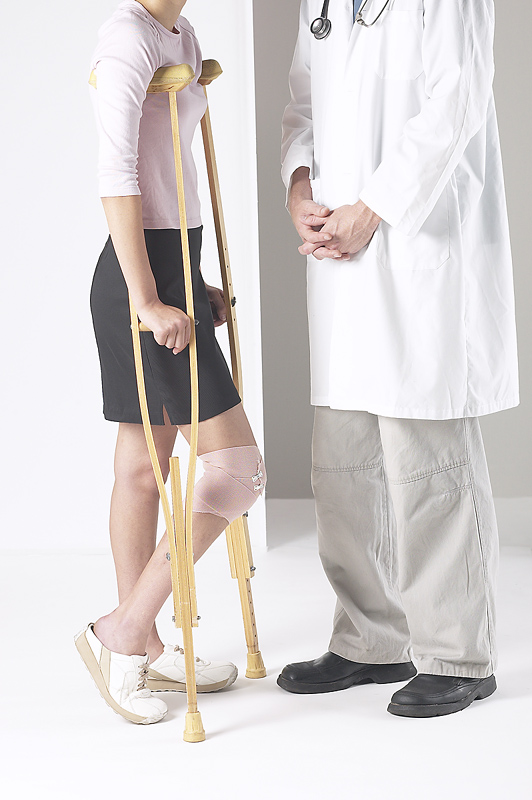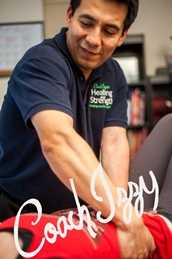The otherwise fit gentleman—in his early fifties and active in many sports—was embarrassed to admit that he threw his back out sneezing. How could this be?
His body, just like all of our bodies, had been compensating for dysfunctions brought about by previous injuries. When the accumulation of these dysfunctions reached a threshold, it was only a matter a time before something as simple as exercising, bending over, or sneezing would put him over the edge—the proverbial straw that broke the camel’s back.

That is the Straw Effect. It is what the most of us experience when it comes to mysterious injuries.
Fully Healed But Not Really
Think of your earlier years. Did you grow up playing sports? If so, there’s a chance you may have experienced injuries that put you out of commission. Or maybe you were one of those kids who took a few spills while playing outside. A couple of ankle sprains, some shoulder tweaks, just part of being active.
But no biggie, right? You were young and healed completely.
Maybe you didn’t play sports or were the hyperactive kid. Maybe you were involved in one, or several, motor vehicle collisions. But no biggie! You didn’t need hospitalization or rehab. You just shook it off and returned to normal life. Pain? Not really, just some stiffness.

Or maybe something happened in daily life. Maybe you tripped as you came down the steps, or perhaps you birthed big babies and the delivery was difficult.
But you overcame those issues and resumed a normal life. Pain? Only a temporary twinge here and there, easily manageable.
So what’s going on this time? How can a small incident bring so much pain? And why is the pain not going away like it used to?
It is common to get distracted by the straw and appoint it as the cause. Just ask those who allegedly injured their backs by bending over to tie their shoes. What are they told? That bending at the waist is the reason they’re in pain and to stop it.
But the issue is much deeper.
It’s in the Layers
I used to believe that once an injury healed, its influence was, at best, minimal. I learned from both Bryan Tuckey and Tim Hodges that is not necessarily so. The bones may mend, the wound may close, and the scar may fade, but that doesn’t mean the Protective Reflex Arcs vanish.
Not only do Reflex Arcs act beyond our voluntary control—they are also self-perpetuating. That means the effects of those injuries you experienced in earlier years could still linger. This constitutes your older layers of dysfunction.
Brian Tuckey theorizes that the permanence of the reflex arcs is a protective mechanism to guard vital structures—as in arteries, veins, nerves, etc., from further harm. The guarding response may create a layer of dysfunction that’s too small to cause major disruptions, but these layers will keep accumulating until you experience the straw effect.
And it’s those layers what dictate the priority of the treatment. Identifying those layers is an easy process for the proficient Counterstrainer—the body reveals them throughout our scan.
Depending on your health, age, and history, getting to the root dysfunction may require removing several layers. That’s why kids, teens, and most young adults heal so fast. Even when their conditions appear severe, they haven’t accumulated many layers and only a couple of treatments may be all they need.
Not so with most grownups. The older we are, the more layers of dysfunction we’ll have—it’s just a fact of life that should be kept in mind for realistic expectations.
But, what about those who never experienced trauma or surgery and are in pain? Do layers also apply to them?
Why Do People Who Never Had Injuries Are Now in Pain?

This wouldn’t be a mystery if we stopped looking for traumatic events that may not be there. If we, instead, shifted, our attention to factors that don’t need traumatic forces, we’d consider the following:
- Poor nutrition habits
- Poor hydration habits
- Poor sleep
- Poor ergonomics
- Poor stress management
- Sedentarism
- Poor exercise mechanics/habits
Those factors, among others, can make us vulnerable to the straw effect but are seldom acknowledged. Take the case of a woman who came to my practice after months of knee discomfort, wondering why she couldn’t get rid of the pain.
I learned she had never experienced an injury and that her pain only showed up after a set of dumbbell walking lunges. There wasn’t anything unusual about her exercise mechanics and even after she removed walking lunges out of her routine, the pain wouldn’t dissipate.
When her treatment wasn’t holding, I looked at the other factors. I knew she was an avid runner, which wouldn’t be an issue—until I saw her running. The way she landed and jarred her body with each stride, I was surprised she only had knee issues. She also had poor sleeping habits. Maybe five hours per night on a good day.
She had a hard time believing it. She had, after all, been running and sleeping like this for years. She didn’t like hearing that getting away with poor habits doesn’t make anyone immune to their effects.
But she agreed to hire a running coach and even when she didn’t improve in the sleep department, the correction in her mechanics was all she needed for the treatment to hold and resolve her issues.
Understanding the true depth of what caused, or perpetuated, a condition is a crucial step in the healing process, and one that should precede all recovery strategies. Only then can we understand what we’re doing to enhance or interfere with the healing process.
And that, friends, is the topic of the next article.
Until next time, may you enjoy a fit and pain-free life!
